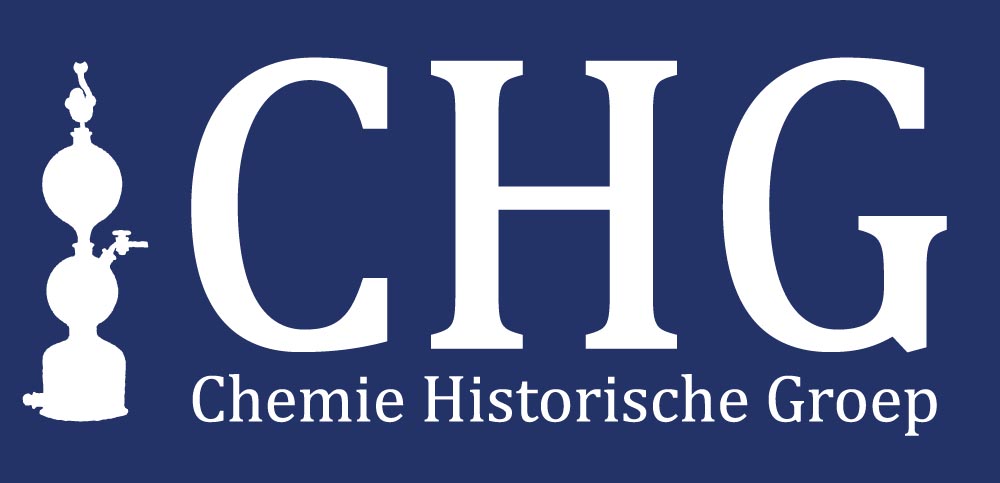From colloids to nano-particles: Historical perspectives on a fascinating world
Op maandag 14 februari 2011 hield de CHG, in samenwerking met de Utrechtse Scheikundige Studentenvereniging Proton, een minisymposium getiteld ‘From Colloids to Nano-particles: Historical Perspectives on a Fascinating World’. Het symposium vond plaats in Utrecht, in een prachtige zaal (de Raadszaal) van de Pietershof. Voor een redelijk volle zaal, een prettige mix van ouderen en studenten, traden de volgende sprekers op ingeleid door dagvoorzitter Rob van Veen:
Prof. Albert Philipse (Utrecht University), ‘Glass Grains Large and Small: Early Views on the Colloidal Domain’.
Dr. Geert Somsen (Maastricht University), ‘A World of Neglected Dimensions: Colloid Propaganda in the Early Twentieth Century’.
Prof. Hans Lyklema (Wageningen University), ‘The DLVO-theory for Colloid Stability: Ins and Outs’.
Prof. Andries Meijerink (Utrecht University),´Chameleonanos´.
Hans Lyklema had nog wat boekjes meegebracht uit de begintijd van de DLVO-theorie, die ter plaatse ingezien mochten worden, heel leuk . Na afloop was er nog een borrel waar flink werd nagepraat: een geslaagde dag.
Hieronder staan de samenvattingen van de vier presentaties.
Prof. Albert Philipse (Utrecht University), ‘Glass Grains Large and Small: Early Views on the Colloidal Domain’
Colloids and nano-particles diffuse and thus display self-assembly and phase transitions, just as atoms and molecules. Brownian motion and diffusion were separately studied in the 19th century by a variety of gentlemen including botanists, priests and even chemists. A debate spanning almost 75 year eventually brought the insight that visible Brownian motion and diffusion of invisible species are identical manifestations of thermal energy. Via the work of Einstein and Perrin on diffusion of single colloids, this insight yielded strong support for the existence of molecules- and a way to count them via Avogadro’s number. Nowadays colloid- and nano-science focus on self-assembly of interacting particles; a challenging field that seemingly reduces free-particle diffusion to a simple reference case. Perhaps not that simple given that a wrong interpretation of diffusion of single colloids was once rewarded with a Nobel price…
Dr. Geert Somsen (Maastricht University), ‘A World of Neglected Dimensions: Colloid Propaganda in the Early Twentieth Century’
Colloid Chemistry did not simply emerge in the early twentieth century. It was launched, by people who wanted to establish it as an autonomous discipline. The field’s most important campaigner was Wolfgang Ostwald, whose USA lecture tour and subsequent book The World of Neglected Dimensions sparked the imaginations of many young researchers and funding agencies. What Ostwald convinced them of was that colloid research would bring revolutionary breakthroughs in medicine, biology, industry, and even meteorology. Cell division, narcotics, star formation, and the reality of atoms—all could be better understood as colloid phenomena. In my talk, I will discuss some of this propaganda, and ask the question cui bono?
Prof. Hans Lyklema (Wageningen University), ‘The DLVO-theory for Colloid Stability: Ins and Outs’
The acronym DLVO stands for Deryagin, Landau, Verwey and Overbeek, two Russians and two Dutchmen who, independent of each other, developed a theory for the stability of lyophobic colloids. The development is historically and scientifically interesting.
The history is that the two groups were aware of each others progress till the outbreak of the Second World War. During this war all Dutch-Russian interaction was suspended. Both groups resolved the main issue, oblivious of the progress of the other party. After the war the communication was restored and then it transpired that the essential steps of the theory were the same, although the presentation was very different. A dispute emerged on the priority which eventually was resolved by naming the model DLVO theory.
Prof. Andries Meijerink (Utrecht University),´Chameleonanos´
The present popularity of everything that involves ‘nano’ is not just a hype. In case of semiconductor and metal nanoparticles new physical and chemical properties arise from the nanometer dimensions. This results in fascinating size dependent optical and electrical properties: the particles change color, just like chameleons, when the size is tuned in the nanometer regime. This presentation will focus on nanocrystalline semiconductors (also known as quantum dots, QDs) where quantum size effects are responsible for a change in the electronic structure. After an historical introduction, highlighting the role of new colloidal synthesis techniques for semiconductor nanocrystals, the unique size dependent properties are explained and demonstrated. In the second part some fun phenomena and applications in biomedical imaging and white lights LEDs will be discussed.

